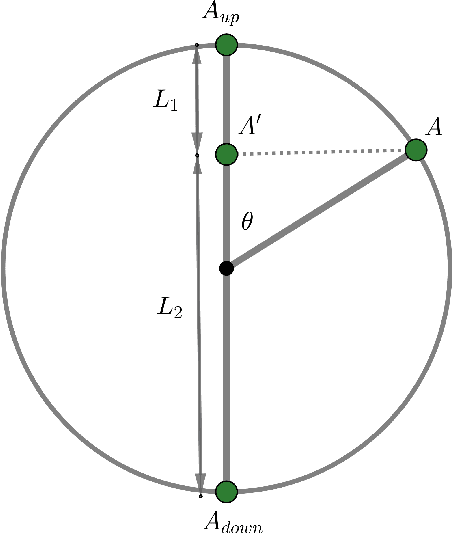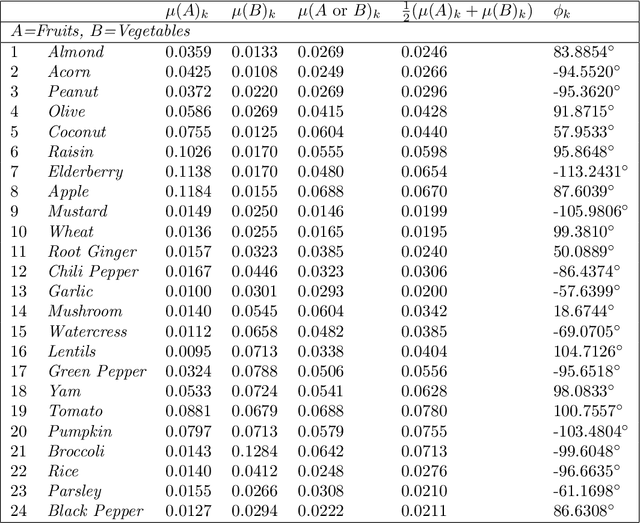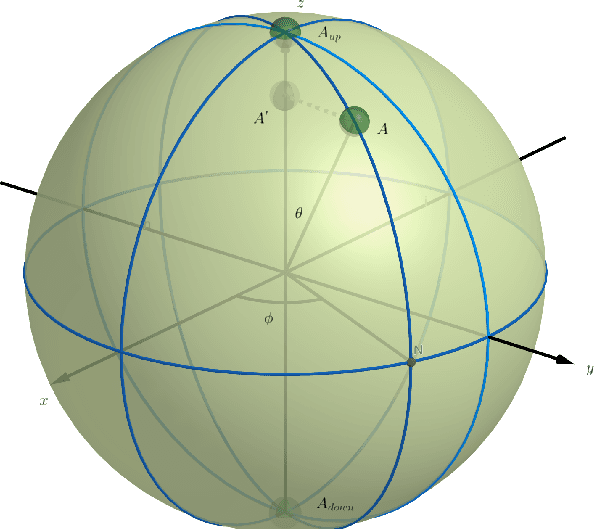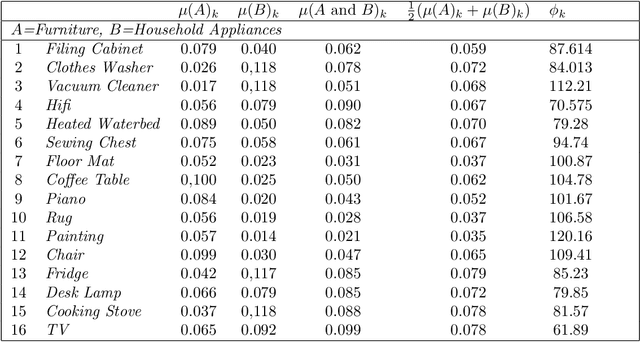Jonito Aerts Arguëlles
Identifying Quantum Mechanical Statistics in Italian Corpora
Dec 10, 2024Abstract:We present a theoretical and empirical investigation of the statistical behaviour of the words in a text produced by human language. To this aim, we analyse the word distribution of various texts of Italian language selected from a specific literary corpus. We firstly generalise a theoretical framework elaborated by ourselves to identify 'quantum mechanical statistics' in large-size texts. Then, we show that, in all analysed texts, words distribute according to 'Bose--Einstein statistics' and show significant deviations from 'Maxwell--Boltzmann statistics'. Next, we introduce an effect of 'word randomization' which instead indicates that the difference between the two statistical models is not as pronounced as in the original cases. These results confirm the empirical patterns obtained in texts of English language and strongly indicate that identical words tend to 'clump together' as a consequence of their meaning, which can be explained as an effect of 'quantum entanglement' produced through a phenomenon of 'contextual updating'. More, word randomization can be seen as the linguistic-conceptual equivalent of an increase of temperature which destroys 'coherence' and makes classical statistics prevail over quantum statistics. Some insights into the origin of quantum statistics in physics are finally provided.
Are Colors Quanta of Light for Human Vision? A Quantum Cognition Study of Visual Perception
Mar 14, 2024Abstract:We study the phenomenon of categorical perception within the quantum measurement process. The mechanism underlying this phenomenon consists in dilating stimuli being perceived to belong to different categories and contracting stimuli being perceived to belong to the same category. We show that, due to the naturally different way in determining the distance between pure states compared to the distance between density states, the phenomenon of categorical perception is rooted in the structure of the quantum measurement process itself. We apply our findings to the situation of visual perception of colors and argue that it is possible to consider colors as light quanta for human visual perception in a similar way as photons are light quanta for physical measurements of light frequencies. In our approach we see perception as a complex encounter between the existing physical reality, the stimuli, and the reality expected by the perciever, resulting in the experience of the percepts. We investigate what that means for the situation of two colors, which we call Light and Dark, given our findings on categorical perception within the quantum measurement process.
Development of a Thermodynamics of Human Cognition and Human Culture
Dec 24, 2022Abstract:Inspired by foundational studies in classical and quantum physics, and by information retrieval studies in quantum information theory, we have recently proved that the notions of 'energy' and 'entropy' can be consistently introduced in human language and, more generally, in human culture. More explicitly, if energy is attributed to words according to their frequency of appearance in a text, then the ensuing energy levels are distributed non-classically, namely, they obey Bose-Einstein, rather than Maxwell-Boltzmann, statistics, as a consequence of the genuinely 'quantum indistinguishability' of the words that appear in the text. Secondly, the 'quantum entanglement' due to the way meaning is carried by a text reduces the (von Neumann) entropy of the words that appear in the text, a behaviour which cannot be explained within classical (thermodynamic or information) entropy. We claim here that this 'quantum-type behaviour is valid in general in human cognition', namely, any text is conceptually more concrete than the words composing it, which entails that the entropy of the overall text decreases. This result can be prolonged to human culture and its collaborative entities having lower entropy than their constituent elements. We use these findings to propose the development of a new 'non-classical thermodynamic theory for human cognition and human culture', which bridges concepts and quantum entities and agrees with some recent findings on the conceptual, not physical, nature of quantum entities.
Quantum Structure in Human Perception
Aug 07, 2022



Abstract:We wish to investigate the ways in which the quantum structures of superposition, contextuality, and entanglement have their origins in human perception itself, given how they are sucessfully used to model aspects of human cognition. Our analysis takes us from a simple quantum measurement model, along how human perception incorporates the warping mechanism of categorical perception, to a quantum version of the prototype theory for concepts, which allows for dynamic contextuality when concepts are combined. Our study is rooted in an operational quantum axiomatics that leads to a state context property system for concepts. We illustrate our quantum prototype model and its interference when combining concepts with two examples worked out in detail
Testing Quantum Models of Conjunction Fallacy on the World Wide Web
Jun 02, 2017Abstract:The 'conjunction fallacy' has been extensively debated by scholars in cognitive science and, in recent times, the discussion has been enriched by the proposal of modeling the fallacy using the quantum formalism. Two major quantum approaches have been put forward: the first assumes that respondents use a two-step sequential reasoning and that the fallacy results from the presence of 'question order effects'; the second assumes that respondents evaluate the cognitive situation as a whole and that the fallacy results from the 'emergence of new meanings', as an 'effect of overextension' in the conceptual conjunction. Thus, the question arises as to determine whether and to what extent conjunction fallacies would result from 'order effects' or, instead, from 'emergence effects'. To help clarify this situation, we propose to use the World Wide Web as an 'information space' that can be interrogated both in a sequential and non-sequential way, to test these two quantum approaches. We find that 'emergence effects', and not 'order effects', should be considered the main cognitive mechanism producing the observed conjunction fallacies.
Context and Interference Effects in the Combinations of Natural Concepts
Dec 19, 2016Abstract:The mathematical formalism of quantum theory exhibits significant effectiveness when applied to cognitive phenomena that have resisted traditional (set theoretical) modeling. Relying on a decade of research on the operational foundations of micro-physical and conceptual entities, we present a theoretical framework for the representation of concepts and their conjunctions and disjunctions that uses the quantum formalism. This framework provides a unified solution to the 'conceptual combinations problem' of cognitive psychology, explaining the observed deviations from classical (Boolean, fuzzy set and Kolmogorovian) structures in terms of genuine quantum effects. In particular, natural concepts 'interfere' when they combine to form more complex conceptual entities, and they also exhibit a 'quantum-type context-dependence', which are responsible of the 'over- and under-extension' that are systematically observed in experiments on membership judgments.
* 12 pages, no figures
 Add to Chrome
Add to Chrome Add to Firefox
Add to Firefox Add to Edge
Add to Edge